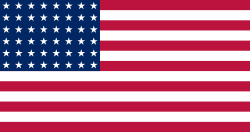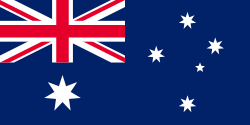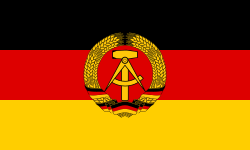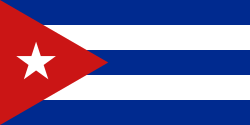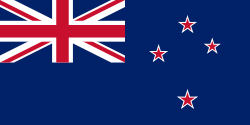Waleri Nikolajewitsch Brumel
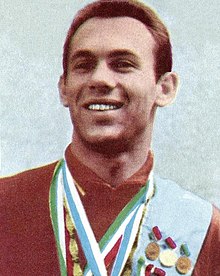
Waleri Nikolajewitsch Brumel (russisch Валерий Николаевич Брумель; * 14. April 1942 in Tolbusino bei Tschita; † 26. Januar 2003 in Moskau) war ein sowjetischer Leichtathlet in der Disziplin Hochsprung.
Werdegang
Brumels Vater war ein Geologe deutscher Abstammung, der den russisch-orthodoxen Glauben angenommen hatte. Brumel gewann 1960 bei den Olympischen Spielen in Rom die Silbermedaille mit einer Höhe von 2,16 m bei gleicher Höhe mit dem Olympiasieger Robert Schawlakadse, ebenfalls Sowjetunion. Dritter wurde der amtierende Weltrekordler John Thomas. 1964 wurde Brumel Olympiasieger bei den Olympischen Spielen in Tokio mit einer Höhe von 2,18 m vor John Thomas, der ebenfalls 2,18 m überquerte. Zwischen den beiden olympischen Medaillen gelang es Brumel, in Belgrad mit 2,21 m den Europameistertitel 1962 zu gewinnen.
Er war von 1961 bis 1963 Meister der UdSSR und wurde dreimal von der polnischen Presseagentur Polska Agencja Prasowa (PAP) zu Europas Sportler des Jahres gekürt.
Von 1961 bis 1971 hielt er den Weltrekord und konnte ihn in dieser Zeit sechsmal verbessern. Die letzte Höchstmarke war 2,28 m, die er 1963 überquerte. 1965 erlitt Brumel eine Beinverletzung bei einem Verkehrsunfall, die seine Karriere faktisch beendete. Sechs Jahre lang versuchte er, an seine Höchstform anzuknüpfen, wobei es ihm lediglich gelang, 2,06 m zu überspringen.
Nach dem Ende seiner sportlichen Laufbahn betätigte er sich als Autor von Sachbüchern und veröffentlichte neben einem Roman, einem Drama, auch ein Libretto einer Operette, die allesamt Spiegel seiner eigenen Biografie waren. Er war der geschiedene Ehemann der Dressurreiterin Jelena Petuschkowa. 1992 war er in Genf als Geschäftsführer eines Export-Import-Unternehmens für Medikamente tätig.[1] Von 1994 bis zu ihrer Auflösung im Oktober 2002 war er Vizepräsident der Association Internationale Nadezhda, einer Stiftung zur Förderung künstlerisch begabter Jugendlicher mit Sitz in Troinex.[2] Wenige Monate später verstarb Brumel nach längerem Krebsleiden,[3] sein Grab befindet sich auf dem Moskauer Nowodewitschi-Friedhof. 2014 fand er Aufnahme in die IAAF Hall of Fame.
Einzelnachweise
- ↑ Tribuna Sporturilor Nr. 120 vom 6.–12. Juli 1992 (rumänisch)
- ↑ Registre du Commerce du Canton de Genève, abgerufen am 25. August 2018 (französisch)
- ↑ Obituary: Valery Brumel, abgerufen am 25. August 2018 (englisch)
Weblinks
- Waleri Brumel in der Datenbank von Olympedia.org (englisch)
| Personendaten | |
|---|---|
| NAME | Brumel, Waleri Nikolajewitsch |
| KURZBESCHREIBUNG | sowjetischer Leichtathlet in der Disziplin Hochsprung |
| GEBURTSDATUM | 14. April 1942 |
| GEBURTSORT | Tolbusino bei Tschita |
| STERBEDATUM | 26. Januar 2003 |
| STERBEORT | Moskau |
Auf dieser Seite verwendete Medien
Olympic Rings without "rims" (gaps between the rings), As used, eg. in the logos of the 2008 and 2016 Olympics. The colour scheme applied here was specified in 2023 guidelines.
US Flag with 44 stars. In use 4 July 1891–3 July 1896. Created by jacobolus using Adobe Illustrator, and released into the public domain.
US Flag with 44 stars. In use 4 July 1891–3 July 1896. Created by jacobolus using Adobe Illustrator, and released into the public domain.
US Flag with 45 stars. In use 4 July 1896–3 July 1908. Created by jacobolus using Adobe Illustrator, and released into the public domain. This flag was used during the Spanish-American War.
US Flag with 45 stars. In use 4 July 1896–3 July 1908. Created by jacobolus using Adobe Illustrator, and released into the public domain. This flag was used during the Spanish-American War.
US Flag with 48 stars. In use for 47 years from July 4, 1912, to July 3, 1959.
The Canadian Red Ensign used between 1921 and 1957.
This image has compared for accuracy (mainly colors) using an image from World Statesmen. The only change is making the maple leaves green from red. This image has compared for accuracy (mainly colors) using an image from World Statesmen. The most recent version of this image has changed the harp into one with a female figure; see [http://flagspot.net/flags/ca-1921.html FOTW
Flag of Australia, when congruence with this colour chart is required (i.e. when a "less bright" version is needed).
See Flag of Australia.svg for main file information.(c) I, Cmapm, CC BY-SA 3.0
The flag of the Soviet Union (1955-1991) using a darker shade of red.

(c) I, Cmapm, CC BY-SA 3.0
The flag of the Soviet Union (1955-1991) using a darker shade of red.

Flag of Second Polish Republic and later People's Republic of Poland in period from March 29, 1928 to March 10, 1980. Red shade used here is HTML "vermilion" #E34234. Proportion 5:8.
Flag of Second Polish Republic and later People's Republic of Poland in period from March 29, 1928 to March 10, 1980. Red shade used here is HTML "vermilion" #E34234. Proportion 5:8.
Die Staatsflagge der Deutschen Demokratischen Republik, vom 1. Oktober 1959 bis 3. Oktober 1990
Flag of Canada introduced in 1965, using Pantone colours. This design replaced the Canadian Red Ensign design.
US Flag with 46 stars. In use 4 July 1908–3 July 1912. Created by jacobolus using Adobe Illustrator, and released into the public domain.
Other version: Image:US 46 Star Flag.svgCAMPIONI DELLO SPORT 1966/67 - Figurina/Sticker n. 48 - V. BRUMEL
The Canadian Red Ensign used between 1921 and 1957.
This image has compared for accuracy (mainly colors) using an image from World Statesmen. The only change is making the maple leaves green from red. This image has compared for accuracy (mainly colors) using an image from World Statesmen. The most recent version of this image has changed the harp into one with a female figure; see [http://flagspot.net/flags/ca-1921.html FOTW



